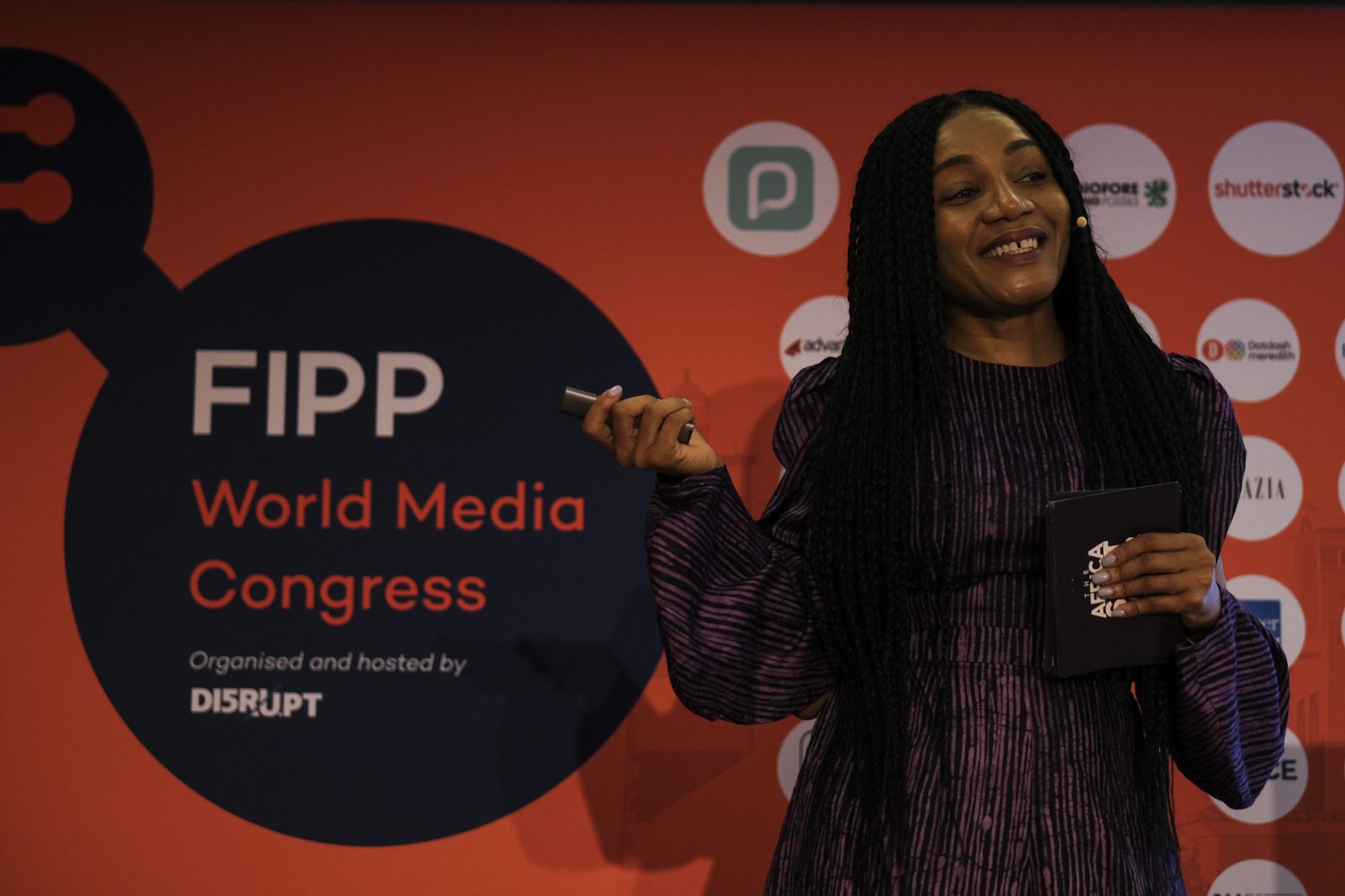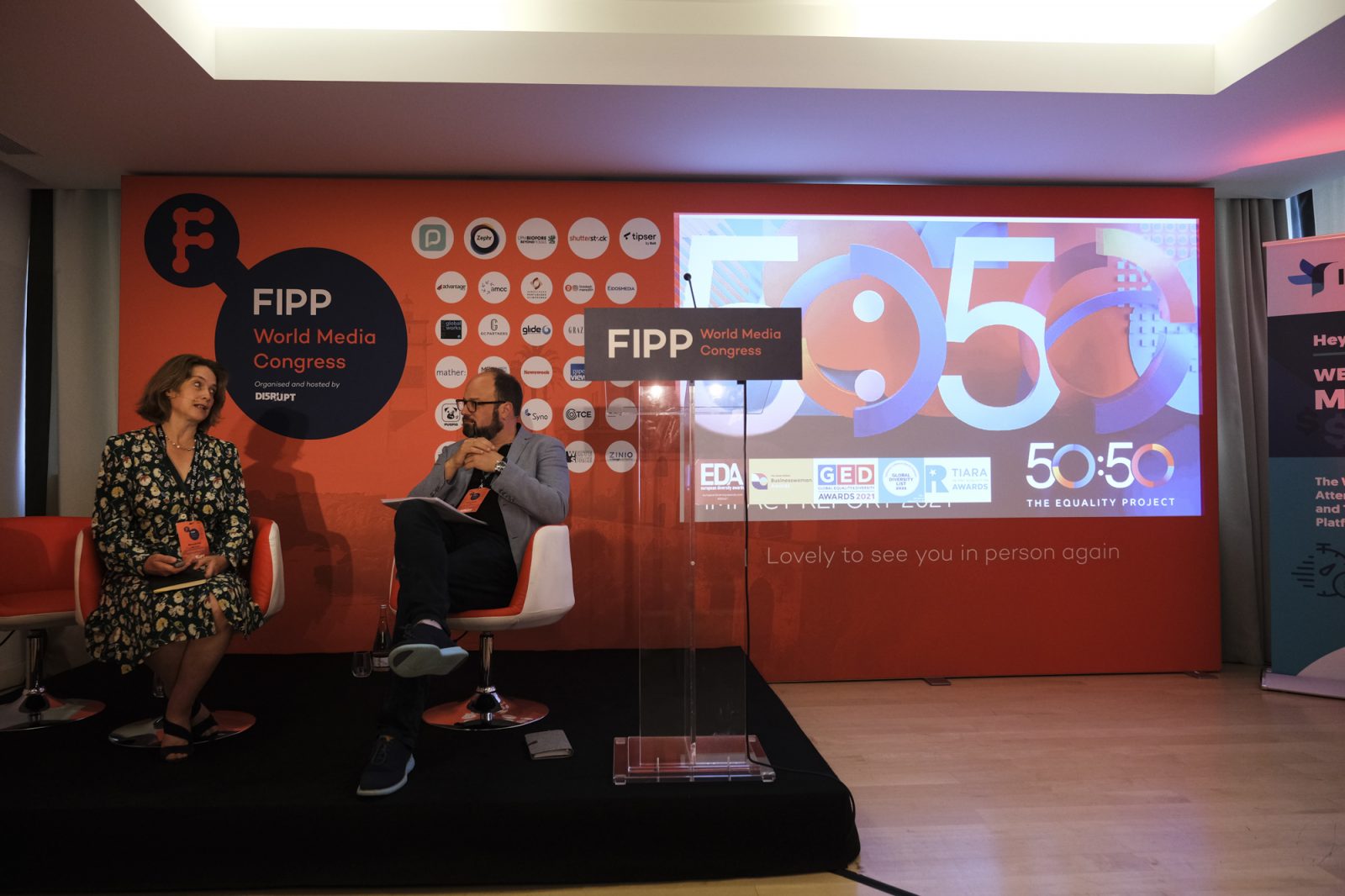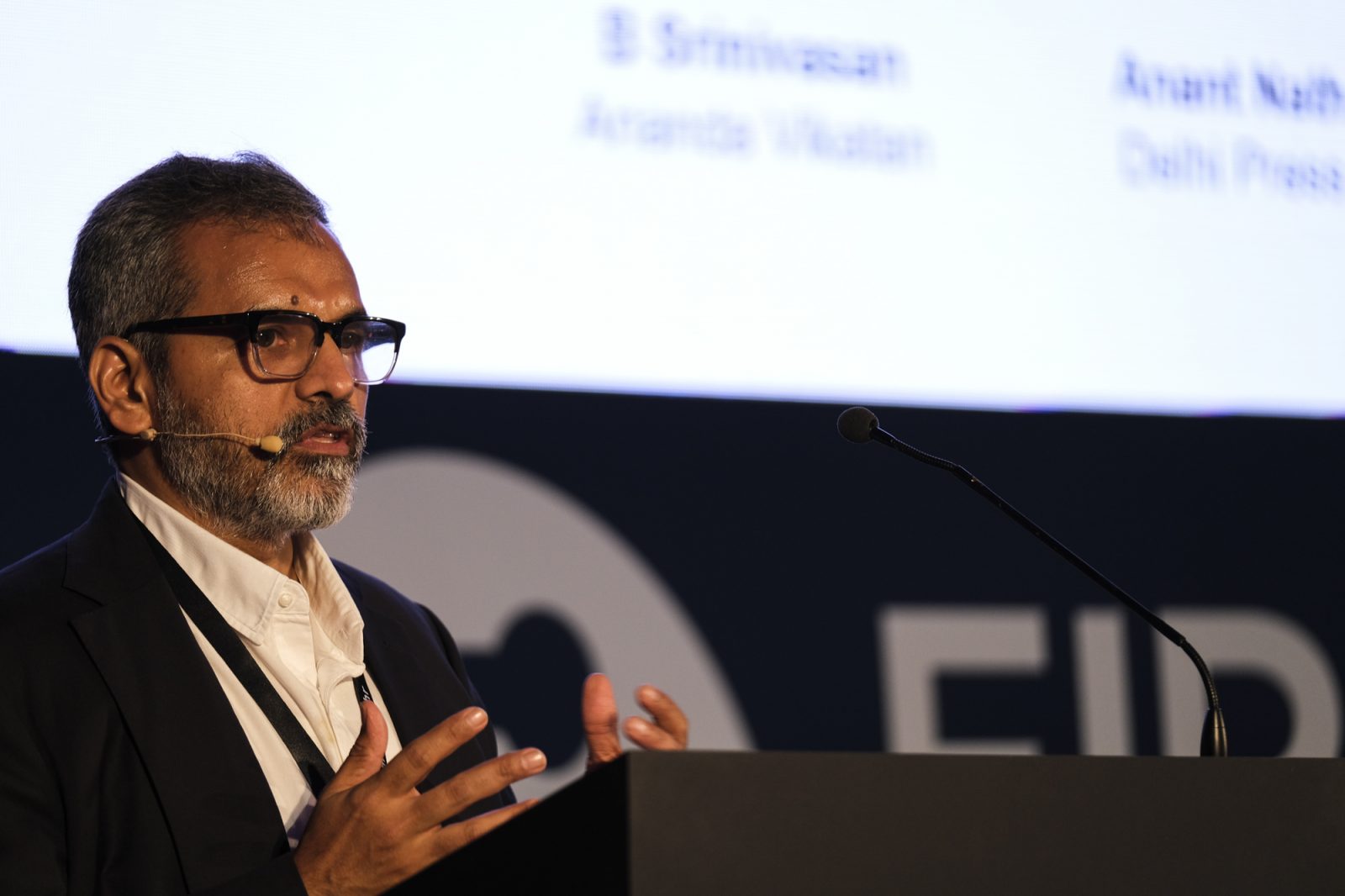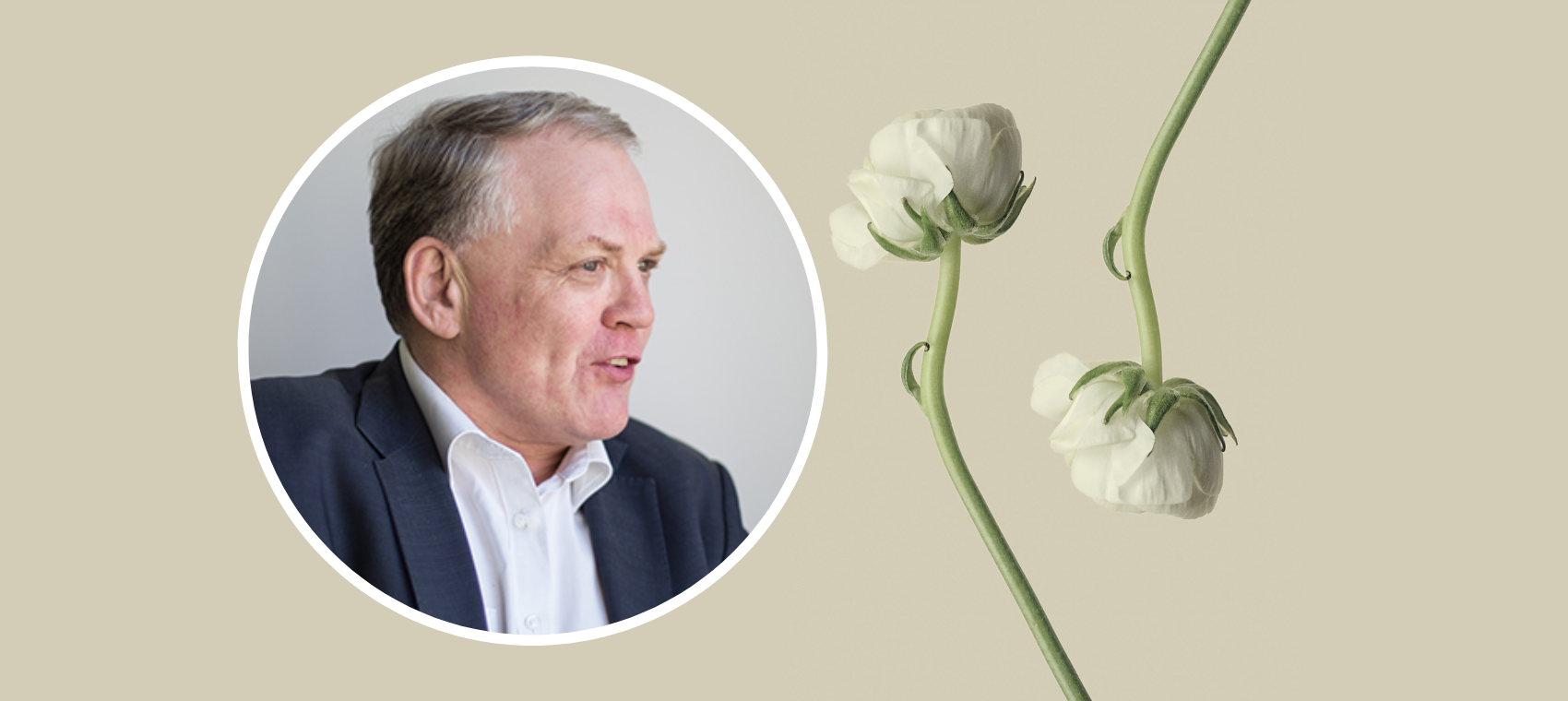Diversification beyond revenue at FIPP Congress: how these media brands are reaching underserved audiences
At FIPP Congress last week, revenue diversification was a big topic – but so too was diversification in media organisations’ staff, the places where they operate, the people they represent, how they reach underserved audiences, and the types of stories they tell.
“This is an issue that transcends HR,” summarised Erica Lovett, Head of Diversity and Inclusion, Cartier North America, during a panel discussion on diversity and inclusion.
Acknowledging where we can do better
FIPP’s first female Chair, Yulia Boyle, used her opening remarks to address the issue of diversity both within FIPP as an organisation, and in the type of content we cover. The Vice President for International Media, Image Collection and Content Operations at The Walt Disney Company/National Geographic Partners, introduced us to her key priorities for the industry across representation, member value, inclusive content, and innovation as she too looked to a positive future ahead.
“When we look historically at our industry and at FIPP, we haven’t been looking hard enough at those regions like APAC and Africa where growth opportunities lie,” admitted Boyle. “But consumer behaviour has changed, and especially as the first female Chair of the organisation, I want us to live up to our tagline to connect global media.”
Read more about Boyle’s opening remarks here.

Harnessing Africa’s soft power
Africa Soft Power’s Founder and Creative Director, Nkiru Balonwu, gave a rousing talk which identified a real missed opportunity in coverage of Africa, which is both a wasted chance for the media industry and damaging to the continent itself.
“Africa still has a reputation in the west as a ‘dark continent’ where no one has clean water, where there’s corruption and poverty and war,” she said. “But what about [singer-songwriter] Burna Boy, who made history by being the first Nigerian to headline at Madison Square Gardens? Why don’t we hear about that?”
There are 1.2bn people on the continent, 25% of the world will be living there by 2050, and there are 54 countries and cultures with wildly diverse populations. What’s more, African women have the highest level of entrepreneurship globally, and drive 70% of consumer spending. While there remain challenges in the continent around infrastructure, consumer rights and digital laws, to focus on these misses all the innovation that is occurring.
Referencing globally renowned Nigerian author Chimamanda Ngozi Adichie, Balonwu cautioned against “the danger of a single story”. “Contrary to what you see represented, Africa is open to businesses and international brands. Tech is huge in Kenya and South Africa. Yet so much of the [western] media thinks that audiences want to see the same old tired photos and stories. We need to be diligent about sourcing stories and experts from Africa, which tell a more accurate story.”
On this basis, she founded Africa Soft Power in 2020. “The silver lining of Covid was you could reach almost anyone and they’d be up for speaking on the platform,” she said. They organised speaker events with speakers from the African diaspora as well as Africa itself, and recently had their first in-person summit in Kigali, Rwanda. “Think Met Gala meets Davos,” Balonwu laughed.
They have also declared May “Africa Month”, and are trying to spread the word to focus media minds on Africa and Africa-owned businesses during that month (and beyond).
“We’re not reinventing the wheel. Africa Soft Power is about thought leadership, events, and leveraging the creative industries and technologies. Also trying to convene around events (eg. FIPP Congress) where Africans are not highly represented. Soft power is about quality AND substantive content. It’s about great stories. America has told those stories for lifetimes, but we don’t have our own version of the American dream – the African dream. My question is: how does Africa tell a different story about itself?”

Measuring gender equality with BBC 50:50
The BBC 50:50 Project’s External Partners Lead, Miranda Holt, also talked to James Hewes about the global popularity of the project, which now has 145 external partners in 30 countries (read more about how it works here.) FIPP joined the scheme earlier this year.
“The point is it’s supposed to be easy,” said Holt, describing the process of how organisations collect data. “It’s about a common-sense approach to reflect society better. There’s a moral imperative, but there’s also a business case for it. You can increase your readership, viewership etc. The first principle is to collect data to effect change. Measure what you can control. And never compromise on quality.”
It isn’t just media organisations that have seen the wisdom in the system’s simplicity. “If you create content, you can count it,” said Holt. “We’ve got law firms, broadcasters, universities on board – and audiences are seeing the change. Truly getting to 50:50 gender equality in your content is difficult. It’s not about berating people, it’s about setting reasonable targets, then making progress towards them.”
She gave the example of Top Gear, which since joining the project has tripled the percentage of women in its content from 3% to 9% within just six months. While it sounds small, it actually represents significant progress, said Holt. She also referenced a huge improvement in BBC Sport content, as well as growing interest in women’s sport in general. “Sports news has had amazing results, like women’s England football player Alex Scott who is the new host of Match of the Day.”
In future, the BBC 50:50 Project hopes to expand to include ethnicity and disability in its stats, working towards a 50:20:12 ratio (reflecting women, diverse ethnicities and people with disabilities), plus a 25% socioeconomic diversity target which is already in place in the organisation’s workforce targets.

Reaching rural audiences in India
In a pivot from content to consumers, we also heard about a project in India which connects rural readers with print magazines, delivered to their doors. Despite the country having high literacy rates, there is friction in “last-mile delivery” and postal subscriptions.
The Association of Indian Magazines – a national group of magazine publishers with a combined audience of 150m in print, digital, and on social media – has come up with an innovative solution to reach hard-to-reach readers in rural parts of the country and leverage print capacity.
Using “one app to bind them all”, vendors, publishers, agents, and customers can order and organise magazine delivery in more than 40 cities and 10 languages across the entire country.
Srini Balasubramanian, MD, Vikatan Group, Manoj Sharma, CEO – Publishing, India Today Group and Anant Nath, Executive Publisher, Delhi Press and Editor, The Caravan spoke on stage about how this united approach is already modernising distribution and improving access to quality content despite just being in its first phase – a fine example of collaboration across different actors in the media industry.
Attracting the young through audio
We also heard about how younger audiences – roughly speaking, those under 40 – respond strongly to audio content. At both the New York Times and Tortoise, podcasts and audio stories drive this demographic’s engagement with these brands, as they see their interests reflected in the content.
Katie Vanneck-Smith, Co-founder and Publisher, Tortoise, talked about their pivot to an audio-to-member strategy. “We now have predominantly audio output – driven by the fact that we couldn’t get cut through on social media, because we didn’t have the volume,” Vanneck-Smith told Brian Morrissey on stage. “Our under-40s audience prefer audio to newsletters, and they love the intimacy of podcasts.
“We now have a very deliberate audio-to-member strategy. The average listener of our podcasts is 28, while the average Tortoise member is 39. This tells you something about reaching these younger audiences.”
Vanneck-Smith added that what’s nice about audio is that people are spending time with it. “It’s a much more satisfying medium than digital articles, which people often don’t finish. By contrast, the [flagship Tortoise podcast] the Slow Newscast has an 88% listen-through rate.
“If 1% of our listeners convert to members, we’re happy with that. The UK [where Tortoise is based] has one of the lowest propensities to pay for news in the world, at 7% – probably because of the BBC! But podcast listeners are three times as likely to be willing to pay, at 21%. There’s an opportunity here to reach a very engaged audience.”
“I don’t have exact statistics, but I can tell you that the demographics on The Daily skew way younger than they do on the news app,” said the New York Times’ Armstrong. “These are younger generations who’re really interested in topics like climate change and are hungry to understand the world through these big issues.”
Read the full story here.










